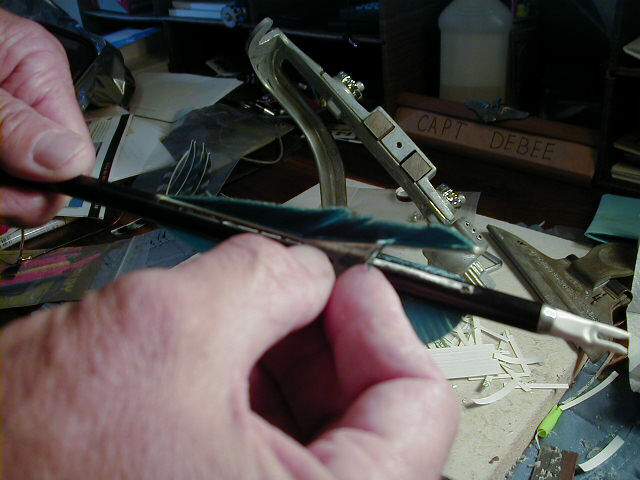
Remove old fleching with a razor blade or pocket-knife. Scrape off as much as possible.

Once scraped, use a fine sandpaper to clean the shaft and rough up the surface. A preferred alternative is to use a solvent like GoofOff or acetone, followed by a cleanup with 91% alcohol to remove all cleaner residues.

Clean the surface of the aluminum with alcohol or other evaporating solvent.
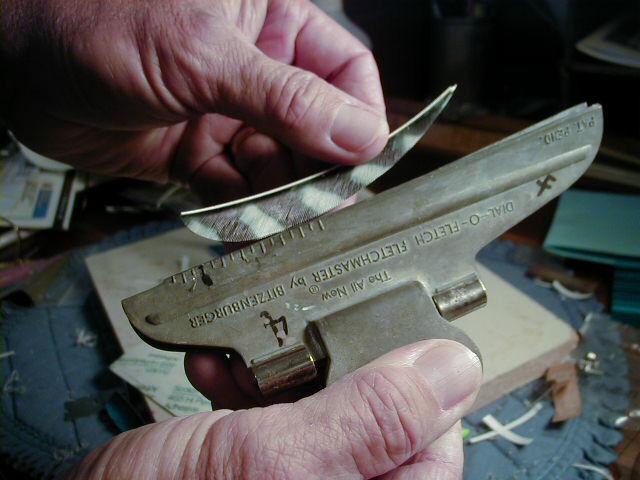
Insert the new feather in the jig. This jig is helical and right twisted. Mark the jig so that the back end of each feather is at the same location on the shaft.
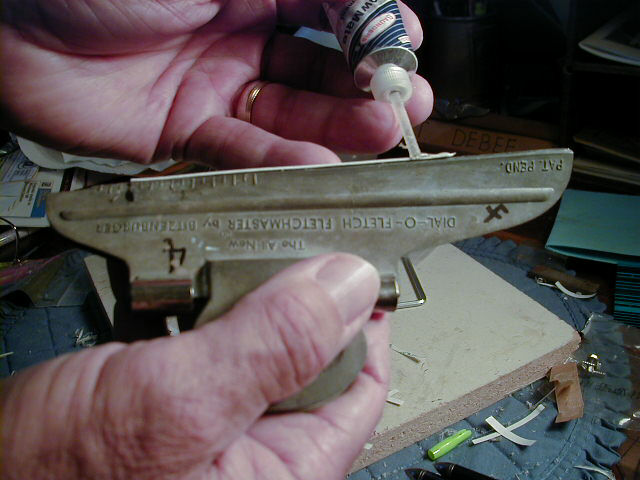
Apply an even layer of fletching glue to the feather. Too much glue will make a sloppy job with the possibility of the glue bumping the plunger as the shaft leaves the bow. You can also use double-sided fletch tape instead of glue.
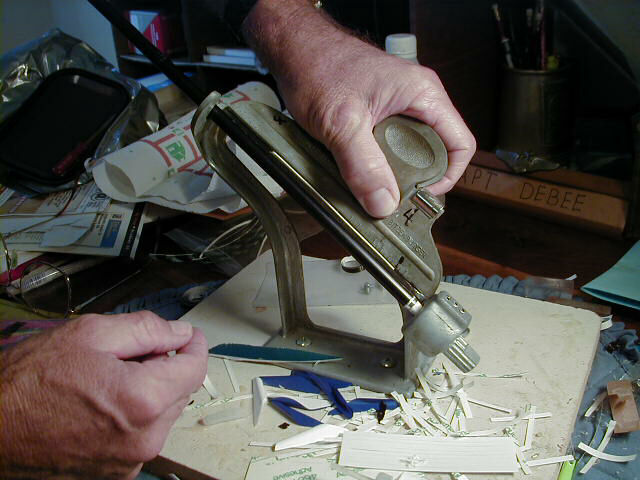
With this jig I make sure the base is butting up against the frame to keep all feathers the same distance from the knock. Also, press the feather against the shaft so that the glue touches all along the shaft.
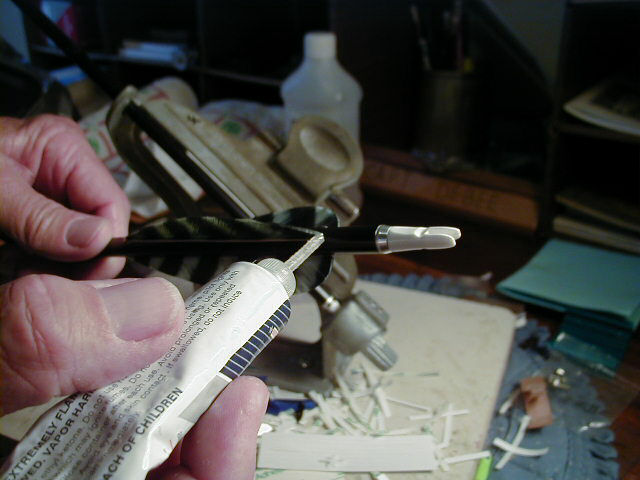
Once all three feathers are glued on the shaft, place a drop of glue at the ends of each feather. This helps prevent the feather breaking loose in flight.
One can also use fletch tape, which is a narrow double-stick tape, in place of the glue. Benefits are that the arrow can be shot immediately as there is no drying time needed. Fletch tape can be purchased from Lancaster Archery Supply (and others).